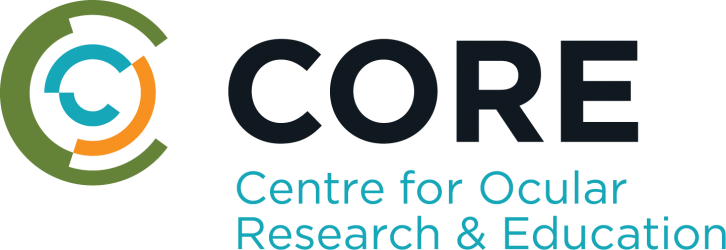Publications
Showing 25 results out of 2956 in total.
Chamberlain,P., Bradley,A., Arumugam,B., Hammond,D., McNally,J., Logan N., Jones,D., Ngo,C., Peixoto-de-Matos S., Hunt,C., Young G.
Long-term Effect of Dual-focus Contact Lenses on Myopia Progression in Children: A 6-year Multicenter Clinical Trial
Optom Vis Sci 2022;99(3):204-212 [ Show Abstract ]
Significance: Treatment of myopic children with a dual-focus soft contact lens (DFCL; MiSight 1 day) produced sustained slowing of myopia progression over a six-year period. Significant slowing was also observed in children switched from control to treatment lenses (3 years in each lens).
Purpose: Evaluate the effectiveness of DFCLs in sustaining slowed progression of juvenile-onset myopia over a 6-year treatment period. Assess myopia progression in children who were switched to DFCL at the end of year 3.
Methods: Part 1 was a 3-year clinical trial comparing DFCLs with control CLs (Proclear 1 day) at four investigational sites. In Part 2, subjects completing Part 1 were invited to continue for 3 additional years during which all children were treated with MiSight 1 day DFCLs (52 and 56 from the initially treated (T6) and control (T3) groups, respectively). 85 subjects (45 (T3) and 40 (T6)) completed Part 2. Cyclopleged spherical equivalent refractive errors (SERE) and axial lengths (AL) were monitored and linear mixed model was used to compare their adjusted change annually.
Results: Average age at Part 2 baseline was 13.2 ± 1.3 and 13.0 ± 1.5 for the T6 & T3 groups respectively. Slowed myopia progression in the T6 group observed during Part 1 was sustained throughout Part 2 (Mean ± SEM: Change from baseline SERE(D) = -0.52 ± 0.076 vs -0.51 ± 0.076; change in AL(mm) = 0.28 ± 0.033 vs 0.23 ± 0.033, both P > .05). Comparing progression rates in Part 2 for the T6 and T3 groups respectively indicate that prior treatment does not influence efficacy (SERE -0.51 ± 0.076 vs -0.34 ± 0.077; AL 0.23 ± 0.03 vs 0.18 ± 0.03, both P > .05). Within-eye comparisons of AL growth revealed a 71% slowing for the T3 group (3-years older than Part 1), and further revealed a small subset of eyes (10%) that did not respond to treatment.
Conclusions: DFCLs continue to slow the progression of myopia in children over a six-year period revealing an accumulation of treatment effect. Eye growth of the initial control cohort with DFCL was slowed by 71% over the subsequent 3-year treatment period.
Chamberlain,P., Gonzalez-Meijome,J., Ngo,C., Jones,D., Young,G.
A three-year randomised clinical trial of MiSight lenses for myopia control
Optometry & Vision Science 2019;96(8):556-567 [ Show Abstract ]
SIGNIFICANCE: Results of this randomized, double-masked clinical trial demonstrate the effectiveness of the MiSight soft contact lens in slowing myopia progression over multiple years.
PURPOSE: The purpose of this study was to quantify the effectiveness of MiSight daily disposable soft contact lens in slowing the progression of juvenile-onset myopia.
METHODS: Myopic children (spherical equivalent refraction, -0.75 to -4.00 D; astigmatism, <1.00 D) aged 8 to 12 years with no prior contact lens experience were enrolled in a 3-year, double-masked, randomized clinical trial at four investigational sites in four countries. Subjects in each group were matched for age, sex, and ethnicity and were randomized to either a MiSight 1-day contact lens (test) or Proclear 1-day (control; omafilcon A) and worn on a daily disposable basis. Primary outcome measures were the change in cycloplegic spherical equivalent refraction and axial length.
RESULTS: Of the subjects enrolled, 75.5% (109/144) completed the clinical trial (53 test, 56 control). Unadjusted change in spherical equivalent refraction was -0.73 D (59%) less in the test group than in the control group (-0.51 ± 0.64 vs. -1.24 ± 0.61 D, P < .001). Mean change in axial length was 0.32 mm (52%) less in the test group than in the control group (0.30 ± 0.27 vs. 0.62 ± 0.30 mm, P < .001). Changes in spherical equivalent refraction and axial length were highly correlated (r = -0.90, P < .001). Over the course of the study, there were no cases of serious ocular adverse events reported. Four asymptomatic corneal infiltrative (one test, three control) events were observed at scheduled study visits.
CONCLUSIONS: Results of this clinical trial demonstrate the effectiveness of the MiSight daily disposable soft contact lens in slowing change in spherical equivalent refraction and axial length.
TRIAL REGISTRATION: ClinicalTrials.gov NCT01729208.
Chan A, Taylor S, du Toit R, Chong T, Fonn D. Determination of the accuracy of the glare scatter test: comparison of GST data to bagolini lens-induced glare Optom Vis Sci 1999;76, 12s:229
Chan AA, Simpson TL, du Toit R, Fonn D. Glare shadow test: evaluation of a novel glare-halo test Optom Vis Sci 1998;75, 12s:171
Chan M, Louie D, Senchyna M, Jones L. Inter- and intra-subject variability in IgA levels within the tear film of non-contact lens wearers Optom Vis Sci 2000;77, 12s:265
Chan V. Fast forward to the future - drugs & the ocular surface Contact Lens Spectrum 2022;37, June: 11
Chan V, Drolle E, Phan CM, Hui A, Shi C, Subbaraman L, Wu J, Jones L. Evaluating the activity of lysozyme deposited on contemporary reusable silicone hydrogel contact lenses using an in vitro eye model The Association for Research in Vision and Ophthalmology, New Orleans, LA, USA, 2023 [ Show Abstract ][ PDF ]
Purpose: To evaluate lysozyme activity (LA) on five contemporary reusable silicone hydrogel contact lens (CL)materials over their proposed wear period using an advanced in vitro blink model.
Methods: Five CL materials (lotrafilcon B, samfilcon A, comfilcon A, senofilcon A, and serafilcon A) were cycled daily for 16h on an eye model, followed by 8h of soaking in OPTI-FREE PureMoist, to mimic a typical wear cycle. An artificial tear solution containing physiologically representative proteins and lipids was delivered to the model at a rate of 1.2-2.1μl/min. The model includes an artificial eyelid that blinks at a rate of 6blinks/min, which was kept at room temperature and humidity above 50%. Serafilcon A and senofilcon A were tested over 14 days, whereas the other CLs were evaluated for 30 days. At specified time intervals, including after 1, 7, 14 and 30 days, CLs were removed from the model and lysozyme extracted using a solvent containing acetonitrile and trifluoroacetic acid. The LA from the extracts were then evaluated using a micrococcal absorbance assay.
Results: Overall, LA decreased over time, reaching non-detectable levels by day 30 (p<0.05). Serafilcon A (13.9 ± 7.8μg/lens), and samfilcon A (9.6 ± 2.3μg/lens), had the highest LA after 1 day, followed by comfilcon A (4.7 ± 1.8μg/lens), lotrafilcon B (3.3 ± 1.6μg/lens), and senofilcon A (2.2 ± 3.7μg/lens). By day 7, LA for the weekly replacement lens, serafilcon A, decreased to 0.5 ± 0.6μg/lens. By day 14, LA for the biweekly replacement lens, senofilcon A, decreased to 0.6 ± 0.7μg/lens. Lotrafilcon B, samfilcon A, and comfilcon A, all monthly replacement lenses, decreased in activity by day 30 (0.1 ± 0.2μg/lens, 0.5 ± 0.7μg/lens, 0.0 ±0.0μg/lens respectively).
Conclusions: Deposition of biologically active lysozyme has been proposed to be an important factor for biocompatible CL wear. A decline in activity over time as the deposited protein becomes denatured may impact overall CL performance and has been linked to reduced comfort. LA decreases over time and reaches near zero for all lens types by the end of their proposed wearing period, confirming that they should be replaced within their specified replacement intervals. Compared to simple in vitro vial models, using an advanced blink model for CL deposition testing aims to provide more physiologically relevant results prior to clinical testing.
Chan V, Phan CM, Jones L. Evaluating lysozyme deposition on contemporary daily disposable contact lenses in a novel in vitro blink model The Association for Research in Vision and Ophthalmology, 2020 [ Show Abstract ][ PDF ]
Purpose : To evaluate total lysozyme deposition on daily disposable (DD) contact lenses (CL) using a novel in vitro eye-blink model.
Methods : Three conventional hydrogel (CH) DD CL materials (etafilcon A, omafilcon A, nelfilcon A) and three silicone hydrogel (SH) DD CL materials (delefilcon A, senofilcon A, somofilcon A) were tested. The lenses were removed from their blister packs and placed directly on the eye model. An artificial tear solution (ATS) was flown over the lenses at a flow rate of 1 µl/min. The blink rate was set to 6 blinks per minute and the model was incubated at room temperature (23-26°C) and >45% humidity. After exposure periods of 2, 4 or 8 hours the lenses were removed and the lysozyme was extracted using acetonitrile: 0.2% trifluoroacetic acid (n=3). A separate experiment was conducted with lenses incubated in a vial containing 480 µL of ATS on an orbital shaker at 60 rpm for 8 hours (n=3). The lysozyme activity was measured using a spectrophotometric assay.
Results : Etafilcon A had the highest amount of active lysozyme absorption at all time points (p>0.001). After 8 hours, a cumulative total of 402 ± 102µg/lens of active lysozyme was absorbed on etafilcon A. Delefilcon A had the highest cumulative amount of active lysozyme (26 ± 1µg/lens) for SH materials (p<0.05). Nelfilcon A, senofilcon A and somofilcon A had the lowest amount of lysozyme activity (p0.05). The amount of active lysozyme sorption for certain lens types was different when measured using the eye-blink model as compared to a vial (p<0.05). Etafilcon A had a higher amount of active lysozyme when incubated on the blink model as compared to the vial (p<0.05), whereas somofilcon A and senofilcon A had a higher amount of lysozyme activity in the vial compared to the eye model (p0.05).
Conclusions : The in vitro eye-blink model provides quantitative data that is close to that determined from ex vivo studies and is an excellent model to assess the deposition of lysozyme on DD CL materials.
This is a 2020 ARVO Annual Meeting abstract.
Chan V, Phan CM, Walther H, Ngo W, Jones L. Effects of temperature and blinking on contact lens dehydration using an in vitro blink model 10th Canadian Optometry School Research Conference, Montréal, Canada, Dec 3, 2022
Chan VWY, Phan CM, Walther H, Jones L. Fabrication of an in vitro eye model for practicing corneal foreign body removal 10th Canadian Optometry School Research Conference, Montréal, Canada, Dec 3, 2022
Chan,V. W. Y., Phan,C-M., Ngo,W., Jones,L.
Lysozyme Deposition on Contact Lenses in an In Vitro Blink-Simulation Eye Model Versus a Static Vial Deposition Model
Eye & Contact Lens 2021;47(7):388-393 [ Show Abstract ]
Purpose:
To evaluate active lysozyme deposition on daily disposable (DD) contact lenses (CL) using a novel in vitro blink model.
Methods:
Three conventional hydrogel DD CL materials (etafilcon A, omafilcon A, nelfilcon A) and three silicone hydrogel DD CL materials (delefilcon A, senofilcon A, somofilcon A) were tested. The device blink rate was set to 6 blinks/min with a tear flow rate of 1 μL/min using an artificial tear solution (ATS) containing lysozyme and other typical tear film components. After incubation at 2, 4, or 8 hr, lenses were removed, and lysozyme activity was measured. A separate experiment was conducted with lenses incubated in a static vial containing 480 μL of ATS.
Results:
Etafilcon A deposited significantly higher amounts of active lysozyme (402±102 μg/lens) than other lens materials after 8 hr (P<0.0001). Etafilcon A had a higher amount of active lysozyme using the blink model compared with the static vial (P=0.0435), whereas somofilcon A (P=0.0076) and senofilcon A (P=0.0019) had a higher amount of lysozyme activity in the vial compared with the blink model.
Conclusion:
The blink model can be tuned to provide quantitative data that closely mimics ex vivo studies and can be used to model deposition of lysozyme on CL materials.
Chan,V. W. Y., Phan,C-M., Walther,H., Ngo,W., Jones,L.
Effects of Temperature and Blinking on Contact Lens Dehydration of Contemporary Soft Lens Materials Using an In Vitro Blink Model
Translational Vision Science & Technology 2021;10(8):11 [ Show Abstract ]
Purpose: The purpose of this studywas to evaluate the effects of temperature and blinking on contact lens (CL) dehydration using an in vitro blink model.
Methods: Three silicone hydrogel (delefilcon A, senofilcon A, and comfilcon A) and two conventional hydrogel (etafilcon A and omafilcon A) CL materials were evaluated at 1
and 16 hours. The water content (WC) of the CLs was measured using a gravimetric method. Lenses were incubated on a blink model, internally heated to achieve a clinically relevant surface temperature of 35°C. An artificial tear solution (ATS) was delivered to the blink model at 4.5 μL/min with a blink rate of 6 blinks/min. A comparison set of lenses were incubated in a vial containing either 2 mL of ATS or phosphate-buffered saline (PBS) at 35°C.
Results: Increasing temperature to 35°C resulted in a decrease in WC for all tested CLs over time (P ≤ 0.0052). For most CLs, there was no significant difference in WC over time between ATS or PBS in the vial (P > 0.05). With the vial system, WC decreased and plateaued over time. However, on the blink model, for most CLs, the WC significantly decreased after 1 hour but returned toward initial WC levels after 16 hours (P > 0.05).
Conclusions: The reduction in WC of CLs on the eye is likely due to both an increase in temperature and dehydration from air exposure and blinking.
Translational Relevance: This study showed that the novel, heated, in vitro blink model could be used to provide clinical insights into CL dehydration on the eye.
Chang,J. M. L., Seo,J., Kwan,M. M. Y., Oh,S., McCanna,D. J., Subbaraman,L., Jones,L.
Determining the Toxicity of UV Radiation and Chemicals on Primary and Immortalized Human Corneal Epithelial Cells
Journal of Visualized Experiments 2021;173(July):e62675 [ Show Abstract ]
This article describes the methods of measuring the toxicity of ultraviolet (UV) radiation and ocular toxins on primary (pHCEC) and immortalized (iHCEC) human corneal epithelial cell cultures. Cells were exposed to UV radiation and toxic doses of benzalkonium chloride (BAK), hydrogen peroxide (H2O2), and sodium dodecyl sulfate (SDS). Metabolic activity was measured using a metabolic assay. The release of inflammatory cytokines was measured using a multi-plex interleukin (IL)-1β, IL-6, IL-8, and tumor necrosis factor-alpha (TNF-α) assay, and cells were evaluated for viability using fluorescent dyes.
The damaging effects of UV on cell metabolic activity and cytokine release occurred at 5 min of UV exposure for iHCEC and 20 min for pHCEC. Similar percent drops in metabolic activity of the iHCEC and pHCEC occurred after exposure to BAK, H2O2, or SDS, and the most significant changes in cytokine release occurred for IL-6 and IL-8. Microscopy of fluorescently stained iHCEC and pHCEC BAK-exposed cells showed cell death at 0.005% BAK exposure, although the degree of ethidium staining was greater in the iHCECs than pHCECs. Utilizing multiple methods of assessing toxic effects using microscopy, assessments of metabolic activity, and cytokine production, the toxicity of UV radiation and chemical toxins could be determined for both primary and immortalized cell lines.
Chang,J. M. L., McCanna,D. J., Subbaraman,L. N., Jones,L. W.
Efficacy of antimicrobials against biofilms of achromobacter and pseudomonas
Optometry and Vision Science 2015;92(4):506-513 [ Show Abstract ]
Purpose. Achromobacter xylosoxidans and Pseudomonas aeruginosa biofilms can develop in ophthalmic products and accessories such as contact lens cases, leading to the development of ocular infections. This study evaluated the efficacy of the antimicrobials polyaminopropyl biguanide (PAPB) and benzalkonium chloride (BAK) against A. xylosoxidans and P. aeruginosa biofilms. Methods. Biofilms of A. xylosoxidans and P. aeruginosa used as a comparative control were formed by incubating the bacteria on contact lens cases and on coverslips in phosphate-buffered saline. The biofilms were then exposed to PAPB and BAK for 5 minutes and 4 hours. After exposure, alginate swabs were used to remove the biofilms from the lens cases and the bacteria were plated on tryptic soy agar for determination of survivors. Also, after exposure to these disinfectants, the A. xylosoxidans and P. aeruginosa biofilms were stained with SYTO 9 and propidium iodide. Using a confocal microscope with a 488-nm laser, the number of cells with damaged cell membranes was determined. Results. After 5 minutes of exposure to BAK or PAPB, A. xylosoxidans biofilms were more resistant to the antimicrobial effects of these disinfectants than P. aeruginosa biofilms. After 4 hours, both organisms were reduced by more than 3 logs after exposure to either BAK or PAPB. Confocal microscopy studies revealed that BAK was more effective at damaging A. xylosoxidans and P. aeruginosa cell membranes than PAPB at the concentrations used in ophthalmic products. Conclusions. Biofilms of the emerging pathogen A. xylosoxidans were more resistant to the disinfectants PAPB and BAK than biofilms of P. aeruginosa. Because of the emergence of A. xylosoxidans and the demonstrated greater resistance to the common ophthalmic preservatives BAK and PAPB than the standard Gram-negative organism P. aeruginosa, A. xylosoxidans biofilms should be assessed in antimicrobial challenge tests to assure the safety of multiuse ophthalmic products. Copyright © 2015 American Academy of Optometry.
Chau J. Fast forward to the future - ocular disease and smart contact lenses Contact Lens Spectrum 2022;37, March: 12
Chen,H., Ge,J., Liu,X., Lu,F.
The clinical analysis of 260 combined surgery of glaucoma and cataract
Yan ke xue bao = Eye science / "Yan ke xue bao" bian ji bu 2000;16(2):102-105 [ Show Abstract ]
PURPOSE: To evaluate the efficacy of the combined surgery of glaucoma and cataract. METHODS: We reviewed 260 consecutive cases (279 eyes) who underwent the combined procedure of glaucoma and cataract. The patients were divided into three groups: group 1: extracapsular cataract extraction combined with trabeculectomy; group 2: extracapsular cataract extraction and intraocular lens implantation combined with trabeculectomy; group 3: cataract phacoemulsification and intraocular lens implantation combined with trabeculectomy; We analyzed and compared the postoperative visual acuity (VA), intraocular pressure(IOP) and complications among three groups. RESULTS: 16.2%, 32.4% and 43.5% of patients in three groups achieved 0.3 or better VA. The VA improved rate were 46.6%, 70.4% and 78.3% respectively. The mean postoperative IOP of three groups were 12.72 +/- 6.66 mmHg(1 mmHg = 0.133 kPa), 13.01 +/- 5.26 mmHg, 12.63 +/- 4.66 mmHg(compared with preoperative IOP, P < 0.01). The complications of group 3 were much less than those of the other two groups. CONCLUSION: The combined surgery can control the IOP effectively; The triple procedure can improve the VA rapidly and the phacoemulsification technique can decrease the complications.
Chen,P. Z., Pollit,L., Jones,L., Gu,F. X.
Functional Two- and Three-Dimensional Architectures of Immobilized Metal Nanoparticles
Chem 2018;4(10):2301-2328 [ Show Abstract ]
Recent methodological advances have led to unprecedented precision in the immobilization of metal nanoparticles. These methodologies come from a broad range of disciplines and organize nanoparticle building blocks into a diverse selection of distinct architectures—from small arrays to ordered superstructures. Because properties can be dictated by assembly, architectures can present enhanced properties of the constituent nanoparticles or generate emergent properties of the collective architecture that are unavailable to their constituent nanoparticles. Functional architectures use these properties to further tailor and optimize performance in myriad applications. This review discusses the methodological advances that enable the immobilization of metal nanoparticles in distinct two- and three-dimensional architectures. Discussion will include their distinctions, properties associated with the assemblies and their applications, and the key challenges and future directions in this growing field. The integration of nanomaterials has transformed key applications in a multitude of scientific fields, such as in energy, environmental technologies, water, medicine, and chemical processing. Metal nanoparticles, the predominant type of nanomaterial, are at the center of many of these applications. Conventionally, the physical properties of metal nanoparticles, such as size and shape, are engineered to alter properties and enhance performance. Recent work has developed a new approach: immobilizing metal nanoparticles in architectures. These structures generate enhanced or emergent properties, which can be used to further improve performance in applications, and promise the next generation of applications of metal nanoparticles in science and society. This review discusses the methods (from a wide range of disciplines) that immobilize nanoparticles in precise two- and three-dimensional architectures. Also discussed are the properties that arise from and the utility of the architectures. Metal nanoparticles present enhanced, or emergent, properties when immobilized in precisely configured two- and three-dimensional architectures. Recent methodological advances in a broad range of fields enable the construction of a diverse selection of such architectures. This review discusses these methodologies, their constructed products, and the properties exhibited by the architectures. It also discusses the distinctions, sometimes subtle, between methodologies that often dictate the types of architectures that they can construct and thus the resultant properties that can be presented.
Cheng X, Almaghshi M, Yang M, Shaw A, Brennan NA. Evaluating on-eye wavefront aberrations of a soft contact lens with an optical design simulating orthokeratology Investigative Ophthalmology & Vision Science 2020;61, 7:554 [ Show Abstract ][ PDF ]
Purpose : Orthokeratology (OK) has been shown to be effective in slowing myopia progression. The mechanism of action is hypothesized to be the resultant optical impact to the eye. However, a soft contact lens (SCL) designed to simulate the optical effect of OK (simOK) for myopia control was found to be ineffective in a randomized controlled myopia control trial. The purpose of this study was to evaluate on-eye wavefront aberrations of the simOK lens by comparing to that of successful OK patients.
Methods : Distance (4 m) and near (25 cm) wavefront aberrations were measured with an open-field Shack-Hartmann aberrometer in 8 OK-treated patients (bare eye only) and 20 non-OK subjects with bare eye (simOK-BE) and with simOK lens on-eye (simOK-LOE) between the age of 7 and 25 years. Zernike expansions of wavefront aberration functions to the 6th order were used to determine aberration coefficients for a series of pupil diameters. Zernike coefficient of primary spherical aberration (Z40), Root-Mean-Square (RMS) of 3rd order and total Higher Order Aberrations (HOA, 3rd – 6th orders) at a 5 mm aperture were compared between simOK-BE and SimOK-LOE and between OK and simOK-LOE. A general linear mixed model with a type I error of 0.05 was used for statistical analysis.
Results : Under a 5mm pupil and with a 4-m target, the means (SD) of Z40 were 0.054 (0.050), 0.350 (0.066), and 0.364 (0.212) microns in simOK-BE, simOK-LOE and OK, respectively. Compared to simOK-BE, Z40 was significantly increased with simOK-LOE with least-square-mean (LSM) difference of 0.297 micron (95% CI: 0.255, 0.338, p<0.001). There was no significant difference in Z40 between simOK-LOE and OK (LSM difference (95%CI): -0.034 micron (-0.148, 0.080), p=0.783). Similar results were found between conditions for near wavefront and for total 3rd order aberrations and total HOAs.
Conclusions : This exploratory study demonstrated that wearing SCL designed to simulate the optical impact of OK resulted in a significant increase of HOAs in the eye. The magnitude of HOAs, including primary spherical aberration and 3rd order aberrations, was similar to those of the OK patients. To fully characterize the on-eye optical performance of the simOK lens and understand the mechanism of action of OK, additional analysis of off-axis refraction and accommodative response with the simOK lens will be examined.
This is a 2020 ARVO Annual Meeting abstract.
Cheung S, Lorentz H, Drolle E, Leonenko Z, Jones L. Contact lens solution efficacy at removing in vitro tear film constituents from silicone hydrogel contact lenses: An atomic force microscopy study Optom Vis Sci 2013;90: E-Abstract 135010
Cheung S, Lorentz H, Drolle E, Leonenko Z, Jones L. Contact lens solution efficacy at removing in vitro tear film constituents from silicone hydrogel contact lenses: An atomic force microscopy study Canadian Optometry Schools Research Conference, Waterloo, Canada, 2013
Cheung S, Subbaraman L, Schmidt T, Jones L. Localization of full-length recombinant human proteoglycan 4 in commercial contact lenses using confocal microscopy Invest Ophthalmol Vis Sci 2014;55: E-abstract 6059 [ PDF ]
Cheung,S., Lorentz,H., Drolle,E., Leonenko,Z., Jones,L. W.
Comparative study of lens solutions' ability to remove tear constituents
Optometry and Vision Science 2014;91(9):1045-1061 [ Show Abstract ]
PURPOSE: The purpose of this study was to use atomic force microscopy to compare and characterize the cleaning abilities of a hydrogen peroxide-based system (HPS) and a polyhexamethylene biguanide-containing multipurpose solution (MPS) at removing in vitro deposited tear film constituents, as well as to determine deposition patterns on various silicone hydrogel contact lenses. METHODS: Silicone hydrogel materials - balafilcon A (BA), lotrafilcon B (LB), and senofilcon A (SA) - were incubated for 1 week in an artificial tear solution (ATS) containing representative lipids, proteins, and salts from the tear film. Atomic force microscopy was used to resolve each lens before and after being cleaned overnight in HPS or MPS. Atomic force microscopy was used again to resolve HPS/MPS-cleaned lenses, which were reincubated in fresh ATS for 1 week, before and after an overnight clean in their respective cleaning solution. RESULTS: Atomic force microscopy imaging was able to characterize lens deposits with high resolution. Lenses incubated in ATS revealed distinct differences in their deposition pattern across lens materials. The surface of BA contained about 20-nm-high deposits, whereas deposit heights up to 150 nm completely occluded the surface of SA. Lotrafilcon B lenses revealed clusters of deposits up to 90 nm. The use of either lens solution left trace amounts of tear film constituents, although components from the MPS were seen adsorbed onto the surface after cleaning. Surface roughness (Ra) measurements revealed a significant difference between ATS-incubated and HPS/MPS-cleaned SA and LB lenses (p < 0.05). Ra between first incubated and HPS/MPS-cleaned reincubated SA and LB was also significant (p < 0.05). CONCLUSIONS: Unique variations in ATS deposition patterns were seen between lenses with atomic force microscopy. The application of both HPS and MPS removed most visible surface deposits. © American Academy of Optometry.
Cheung,S., Subbaraman,L. N., Ngo,W., Jay,G. D., Schmidt,T. A., Jones,L.
Localization of full-length recombinant human proteoglycan-4 in commercial contact lenses using confocal microscopy
Journal of Biomaterials Science, Polymer Edition 2020;31(1):110-122 [ Show Abstract ]
The aim of this study was to determine the sorption location of full-length recombinant human proteoglycan 4 (rhPRG4) tagged with fluorescein isothiocyanate (FITC) to four silicone hydrogel contact lenses [balafilcon A (PureVision, Bausch + Lomb), senofilcon A (Acuvue Oasys, Johnson & Johnson), comfilcon A (Biofinity, CooperVision), lotrafilcon B (Air Optix, Alcon)] and one conventional hydrogel lens [etafilcon A (Acuvue 2, Johnson & Johnson)], using confocal laser scanning microscopy (CLSM). Lenses (n = 3 each) were incubated under two conditions: (1) FITC-rhPRG4 solution at 300 μg/mL and (2) phosphate-buffered saline, for 1 h at 37 °C in darkness with gentle shaking. The central 4 mm of each lens was removed and viewed with the Zeiss 510 CLSM using an argon laser at 488 nm (FITC excitation 495 nm, emission 521 nm). Depth scans were taken at 1 μm intervals to a maximum depth of 100 μm. All lens materials demonstrated sorption of rhPRG4. Both senofilcon A and balafilcon A revealed FITC-rhPRG4 penetration into the bulk of the lens, generally favoring the surface. rhPRG4 was observed exclusively on the surface of lotrafilcon B, with no presence within the bulk of the lens. rhPRG4 was evenly distributed throughout the bulk of the lens, as well as on the surface, for comfilcon A and etafilcon A. The sorption profile of FITC-rhPRG4 was successfully visualized using CLSM in various contact lens materials. The polymer composition, surface treatment and pore size of the material can influence the sorption of rhPRG4.
Chong T, Simpson T, Pritchard N, Dumbleton K, Richter D, Fonn D. Clinical grading scales: Continuous vs. discrete Optom Vis Sci 1996;73, 12s:
Chong T, Simpson TL, Pritchard N, Dumbleton KA, Richter DB, Fonn D. Repeatability of discrete and continuous clinical grading scales Optom Vis Sci 1996;73, 12s:232





